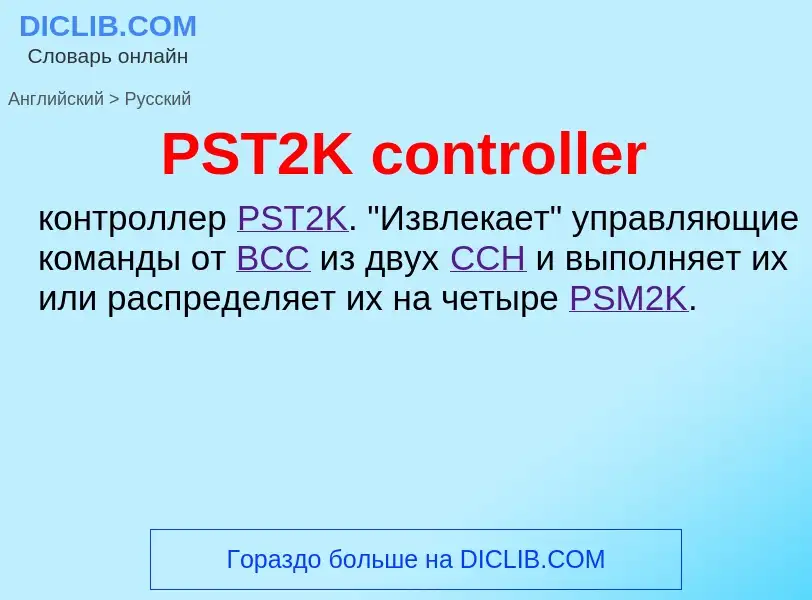Translation and analysis of words by ChatGPT artificial intelligence
On this page you can get a detailed analysis of a word or phrase, produced by the best artificial intelligence technology to date:
- how the word is used
- frequency of use
- it is used more often in oral or written speech
- word translation options
- usage examples (several phrases with translation)
- etymology
PST2K controller - translation to English
общая лексика
дисковый контроллер, контроллер диска
плата расширения и/или микросхема, обеспечивающая взаимодействие процессора с дисковым накопителем
Definition
Wikipedia

The disk controller is the controller circuit which enables the CPU to communicate with a hard disk, floppy disk or other kind of disk drive. It also provides an interface between the disk drive and the bus connecting it to the rest of the system.
Early disk controllers were identified by their storage methods and data encoding. They were typically implemented on a separate controller card. Modified frequency modulation (MFM) controllers were the most common type in small computers, used for both floppy disk and hard disk drives. Run length limited (RLL) controllers used data compression to increase storage capacity by about 50%. Priam created a proprietary storage algorithm that could double the disk storage. Shugart Associates Systems Interface (SASI) was a predecessor to SCSI.
Modern disk controllers are integrated into the disk drive as peripheral controllers. For example, disks called "SCSI disks" have built-in SCSI controllers. In the past, before most SCSI controller functionality was implemented in a single chip, separate SCSI controllers interfaced disks to the SCSI bus.
These integrated peripheral controllers communicate with a host adapter in the host system over a standardized, high-level storage bus interface. The most common types of interfaces provided nowadays by host controllers are PATA (IDE) and Serial ATA for home use. High-end disks use Parallel SCSI, Fibre Channel or Serial Attached SCSI.
Disk controllers can also control the timing of access to flash memory which is not mechanical in nature (i.e. no physical disk).











![Early PID theory was developed by observing the actions of [[helmsmen]] in keeping a vessel on course in the face of varying influences such as wind and sea state. Early PID theory was developed by observing the actions of [[helmsmen]] in keeping a vessel on course in the face of varying influences such as wind and sea state.](https://commons.wikimedia.org/wiki/Special:FilePath/Scross helmsman.jpg?width=200)

